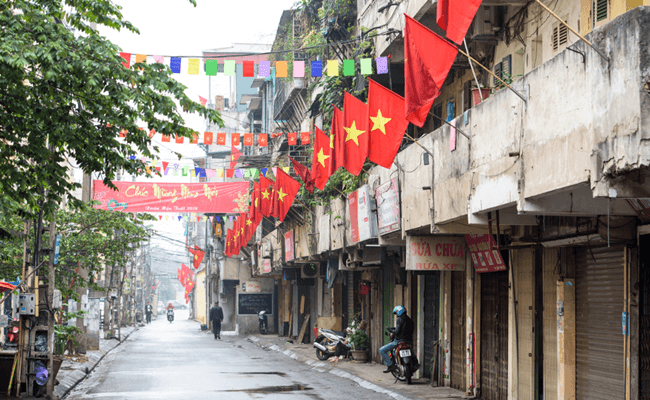The land of historic relics of Trang Kenh – Bach Dang in the north of Thuy Nguyen district, about 20 km from Hai Phong urban areas. It borders Gia river in the south, Chanh river in the East. There are grandiose mountains, harmonizing relics and landscapes.
Trang Kenh-Bach Dang is the same dazzlingly bright red stamp that is remembered in history, to revive profound pride for our country, glorious feat of arms – three times of victory against the North invaders, and with lively pages about the life of our ancestor in nation building period. Pile combat field relics, caves at the foot of mountain U Bo, mountain Phuong Hoang, hiding place for troops, the place where Tran Hung Dao -Moderation Grand Duke had been drumming for the combat. Tran Quoc Bao temple is still greened with moss. In 1960-1970s, many archaeologist excavated, discovered sepulchers, cooking and over 30 pieces of broken potteries, and the most valuable ones are 3,476 precious stone things. They are tiny and fine axes, the glossy round rings for adornment, it is obvious that Trang Kenh ancient quarry men had achieved the height in stone sculpture art. Since in Hung Vuong time, Trang Kenh people had known how to do farming; animal breeding; fishing; hunting for rhinos, elephants, tigers, wild boars, stags, deers, tortoises, turtles, cotters; making pottery; casting bronze things, so that Thuy Nguyen now have many talented people and famous products.
At present, Trang Kenh-Bach Dang has become north-east industry area of city. There are Trang Kenh factory that exploits limestone mines for production of lime, calcium carbide, and Chinfon cement factory with Peach blossom symbol. At the point where Gia river mouth looking at Bach dang river, it is Pha Rung ship repairing factory built with assistance from Finnish Government. There are modern docks which are accommodating high sea vessels to make them ‘young’ again with ocean.
Reminiscing Trang Kenh-Bach Dang brilliant feat of arms we would find it more respective: ‘the identical of water and sky, scenery of three autumn seasons, reed side crushed sword’, and more sympathizing with Pham Manh Su – pride speech in the 13th century:






